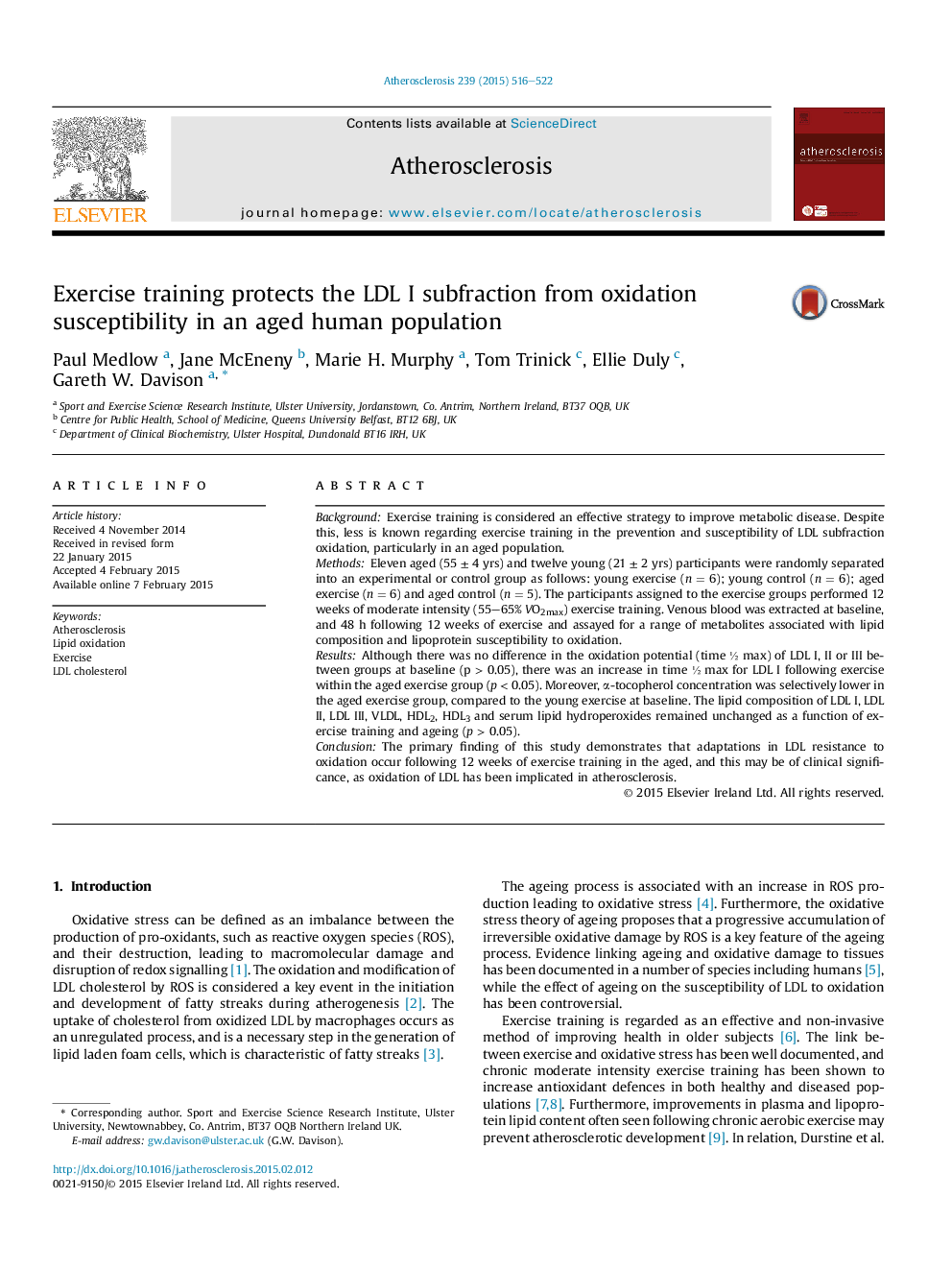| کد مقاله | کد نشریه | سال انتشار | مقاله انگلیسی | نسخه تمام متن |
|---|---|---|---|---|
| 5944697 | 1172345 | 2015 | 7 صفحه PDF | دانلود رایگان |

- LDL resistance to oxidation occurs following 12 weeks of exercise in the aged.
- Exercise training decreases LDL oxidation and inhibits atherosclerosis.
- It is imperative to focus on LDL subfractions rather than LDL homogeneous particles.
BackgroundExercise training is considered an effective strategy to improve metabolic disease. Despite this, less is known regarding exercise training in the prevention and susceptibility of LDL subfraction oxidation, particularly in an aged population.MethodsEleven aged (55 ± 4 yrs) and twelve young (21 ± 2 yrs) participants were randomly separated into an experimental or control group as follows: young exercise (n = 6); young control (n = 6); aged exercise (n = 6) and aged control (n = 5). The participants assigned to the exercise groups performed 12 weeks of moderate intensity (55-65% VO2max) exercise training. Venous blood was extracted at baseline, and 48 h following 12 weeks of exercise and assayed for a range of metabolites associated with lipid composition and lipoprotein susceptibility to oxidation.ResultsAlthough there was no difference in the oxidation potential (time ½ max) of LDL I, II or III between groups at baseline (p > 0.05), there was an increase in time ½ max for LDL I following exercise within the aged exercise group (p < 0.05). Moreover, α-tocopherol concentration was selectively lower in the aged exercise group, compared to the young exercise at baseline. The lipid composition of LDL I, LDL II, LDL III, VLDL, HDL2, HDL3 and serum lipid hydroperoxides remained unchanged as a function of exercise training and ageing (p > 0.05).ConclusionThe primary finding of this study demonstrates that adaptations in LDL resistance to oxidation occur following 12 weeks of exercise training in the aged, and this may be of clinical significance, as oxidation of LDL has been implicated in atherosclerosis.
Journal: Atherosclerosis - Volume 239, Issue 2, April 2015, Pages 516-522